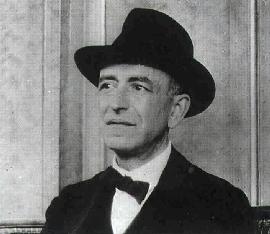| B i o g r a p h y |
 Manuel de Falla (Cadiz 1876 - Alta Gracia, Argentina 1946)
Manuel de Falla (Cadiz 1876 - Alta Gracia, Argentina 1946)
The music of Spain has exercised an exotic fascination, but often in
forms adapted by foreign composers. Manuel de Falla is representative
of a group of Spanish composers who won international recognition. He
was born in 1876 in Cádiz, where he first studied, moving later
to Madrid and then to Paris, but returning to Madrid when war broke out
in 1914. Strongly influenced by the traditional Andalusian cante jondo,
he settled in Granada, where his friends included the poet Federico
Garcia Lorca. The Civil War of 1936 found de Falla neutral in the
struggle, but in 1939 he moved to Buenos Aires, where he continued work
on his ambitious stage-work Atlántida, which remained unfinished
at the time of his death in 1946.
Stage Works
Manuel de Falla helped to support his family in Madrid, after a change in their fortunes, by composing zarzuelas, typically Spanish musical comedies. His first substantial stage work was the lyric drama La vida breve, completed in 1905 and first staged in Nice in 1913. The ballet El amor brujo (Love the Magician), with its ghostly story of gypsy jealousy, was first staged in Madrid two years later. The ballet El sombrero de tres picos (The Three-Cornered Hat), reached its final form for its London production under the impresario Dyagilev in 1919. The puppet opera El retablo de maese Pedro, based on an episode in the classical Cervantes novel Don Quixote, was completed in 1922. There are popular orchestral suites from the first three of these four works.
Orchestral Music
In addition to the concert version of El amor brujo and two suites
from El sombrero de tres picos made by the composer, Manuel de Falla
wrote an evocatively beautiful work for solo piano and orchestra under
the title Noches en los jardines de España (Nights in the
Gardens of Spain) completed in 1915.
Vocal Music
In 1915 de Falla also completed his arrangement of seven popular Spanish songs, Siete canciones populares españolas, familiar not only in the original vocal version but in arrangements, particularly an effective arrangement for violin and piano.
Chamber Music
Among chamber works by de Falla may be included the Concerto for
harpsichord, with flute, oboe, clarinet, violin and cello, making use
of the early keyboard instrument that had played an important part in
his puppet opera El retablo de maese Pedro.
Piano Music
Piano works occupy a less important element among the compositions
of Manuel de Falla, although the four Spanish Pieces and the early
Serenata Andaluza offer pieces in characteristically Spanish musical
idiom.